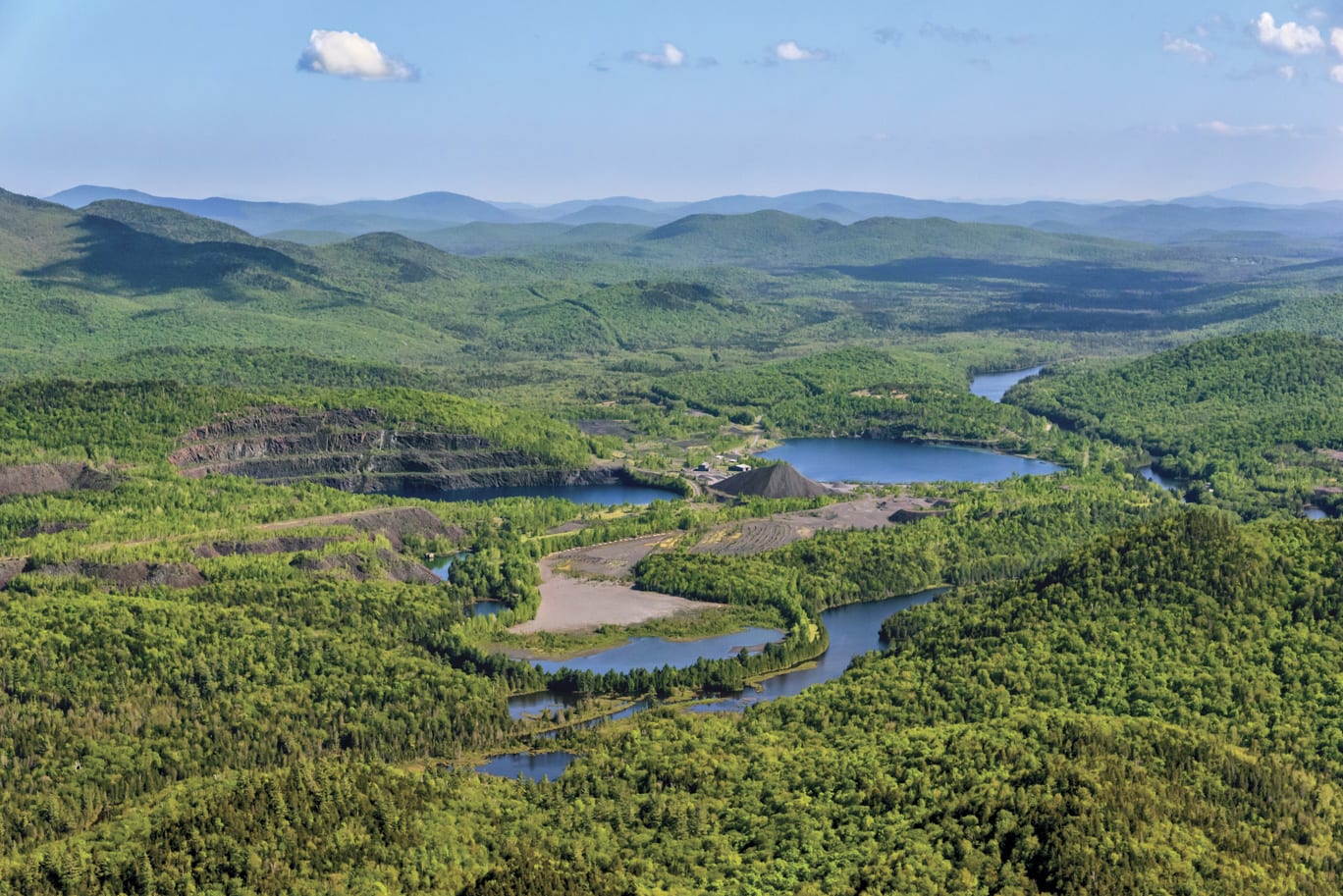Driving up Rt. 87, it’s easy to dismiss the fact that the Adirondacks once represented an international mining hub and even that the park continues to be a major source of raw wood product. Driving into the adirondacks along any major highway, feels quite similar to driving along any other highway in the mountainous East Coast. Lots of trees, lots of hills, a few mountains, the occasional massive rest stop and of course, lots of cars. When I drive up Rt. 87 either to ski at Whiteface or Gore, or to come to school in Vermont, the last thing I consider is that the Adirondacks and much of upstate New York both above and below Albany once represented one of the largest mining operations in the world.
In peak years of production, more specifically during the second world war, the Adirondacks supplied as much as 5,000,000 tons of crude iron ore. In addition to iron, mines in the park took advantage of other metals and nonmetals such as graphite, magnetite, hematite, titanium, zinc, silver, bluestone, granite, and slate amongst many others. Thus, after the early years of speculation in the park, mines popped up all over. With those mines, came small mining towns in which the economy solely revolved around one industry. If the mining industry were to fail, which in almost all towns it did, so did the grocery store, the hardware store, and the local school.

A place that has always felt eerily similar to much of the Adirondacks is lower Appalachia. Old coal mining towns litter West Virginia, Tennessee, Kentucky, and North Carolina. Schools are run down and decrepit along with the towns that surround them. This is arguably one of the most significant failures of the extractionist economical mindset. Coal mining companies mined coal en masse throughout southern Appalachia until the domestic economy no longer wanted to burn the nasty substance. So instead, they packed up their trucks, equipment and executives and began drilling for the next big thing:oil. In doing so, companies left their lymphatic and fibrosis riddled workers behind, with no economy to support them.
Even though there is certainly no less need for iron and steel today, mines across the Adirondacks have closed, or at least cut production significantly. There are a variety of reasons for this shift. Not only is it harder to reach untapped areas, but it is also tough to extract raw materials from the mountainous regions. At the end of the day however, it’s cheaper for companies like Imerys to pay Mexican workers 10 USD a day to do the same work that American workers charge 150 USD.
Back to not being able to tell there are mines… There certainly were. Since the end of the war, mines have steadily closed and many that promised to generate more jobs such as the NYCO transfer simply went nowhere. Open pit mines are now filled with water and look like deep blue lakes, while the areas around the pits have completely grown back in the decades since their use. Mining shafts and giant blast furnaces are covered with growth and sit in decay. And unfortunately, so do many towns.
Anderson, Sven A., and Augustus Jones. “Iron in the Adirondacks.” Economic Geography, vol. 21, no. 4, [Clark University, Wiley], 1945, pp. 276–85, https://doi.org/10.2307/140996.
Odato, James. “NYCO Land Swap Has Failed to Save Jobs.” Adirondack Explorer, 30 Oct. 2018, https://www.adirondackexplorer.org/stories/nyco-land-swap-has-failed-to-save-jobs.
